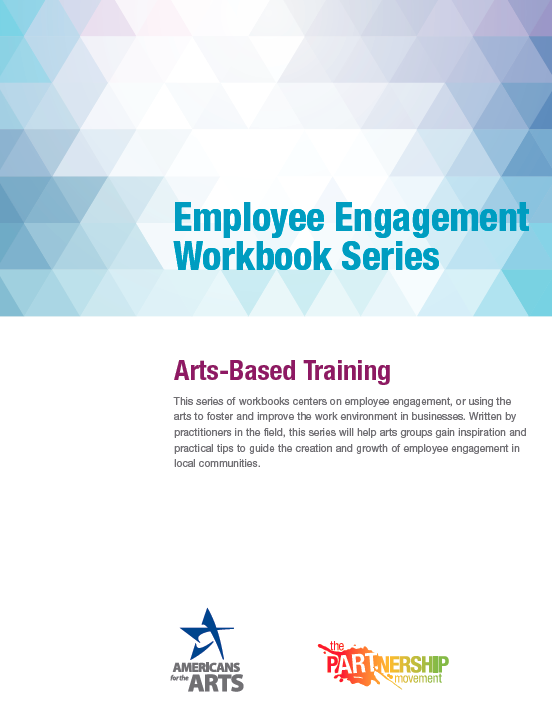This workbook series focuses on one of the many ways arts organizations can work with businesses—arts-based employee engagement. This broad concept can be defined as employee engagement training or a cultural experience, delivered through various arts disciplines (music, visual art, drama etc.) with the goals of:
- developing trust;
- finding shared values;
- shifting perceptions;
- combining right-brain imagination with left-brain logic and analysis to increase the capacity for breakthrough ideas and insights; and
- teaching employees leadership and communication skills and high-performance teamwork.
Since the 1990s, businesses from law firms, banks, and Fortune 500 companies, to hospitals, local governments, and community-based organizations have been using arts-based training to engage employees and reach business goals.
Each workbook in this series is based on a specific organization’s programs, philosophy, and tactics about creating employee engagement programs for the business community. This workbook features the work of The Arts & Business Council of Nashville (A&BC Nashville). A portion of the day-to-day work at A&BC Nashville is placing artists in unexpected arts-business partnerships. In some situations, artists are learning new skill sets from business experts and in others, they become the trainers, the experts teaching members of Nashville’s booming business community about innovation and creativity.
A&BC Nashville’s WorkCreative program brings arts into the workplace by engaging employees in hands-on creativity to stimulate communication, build teamwork, and spark innovation for effective business growth. Spanning industries as varied as banking and healthcare, the in-office projects include music, visual, and performing arts and are customized by an A&BC Nashville staff consultant to meet each company’s goals.
This workbook series focuses on one of the many ways arts organizations can work with businesses—arts-based employee engagement. This broad concept can be defined as employee engagement training or a cultural experience, delivered through various arts disciplines (music, visual art, drama etc.).


Most Commented